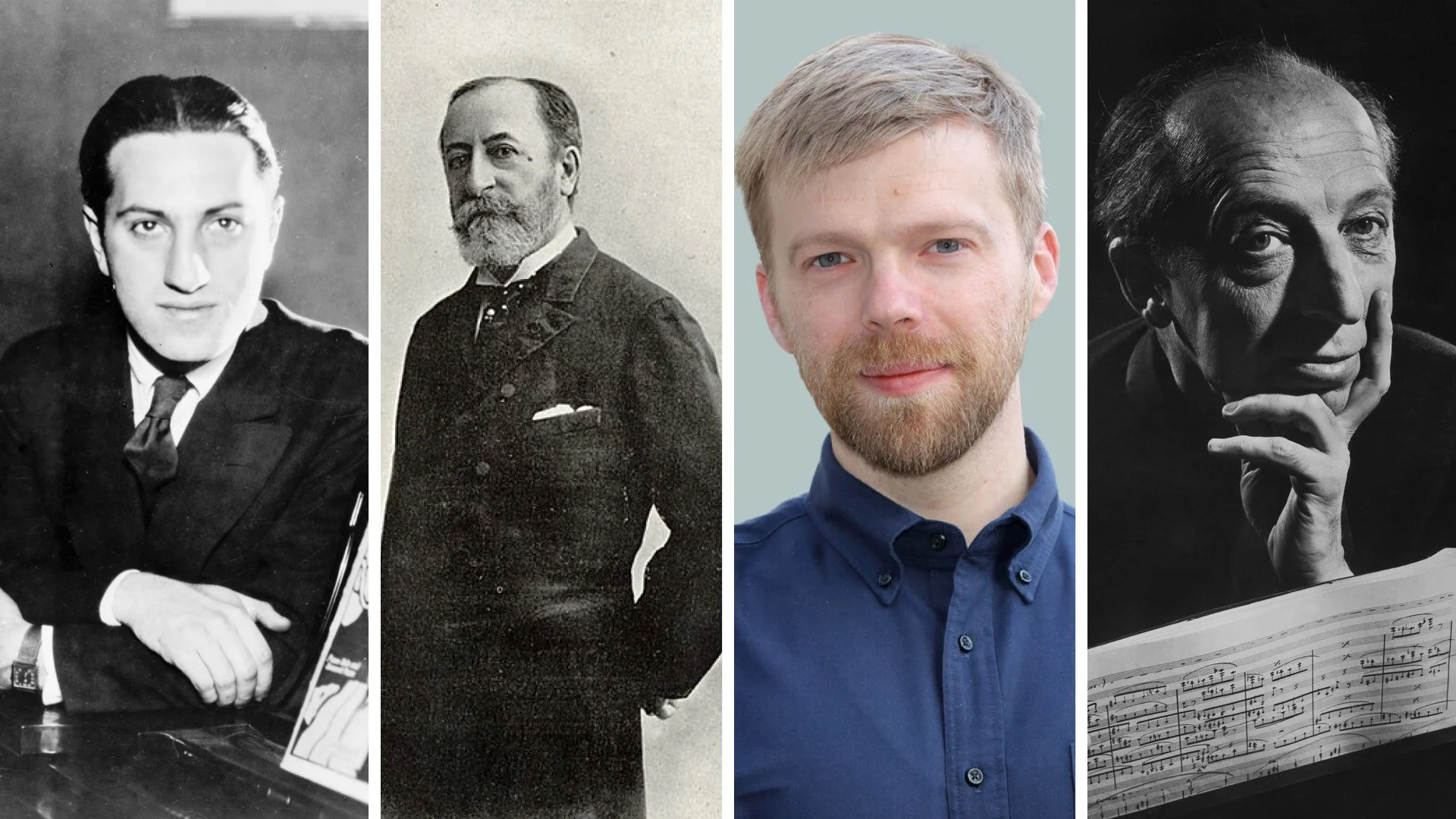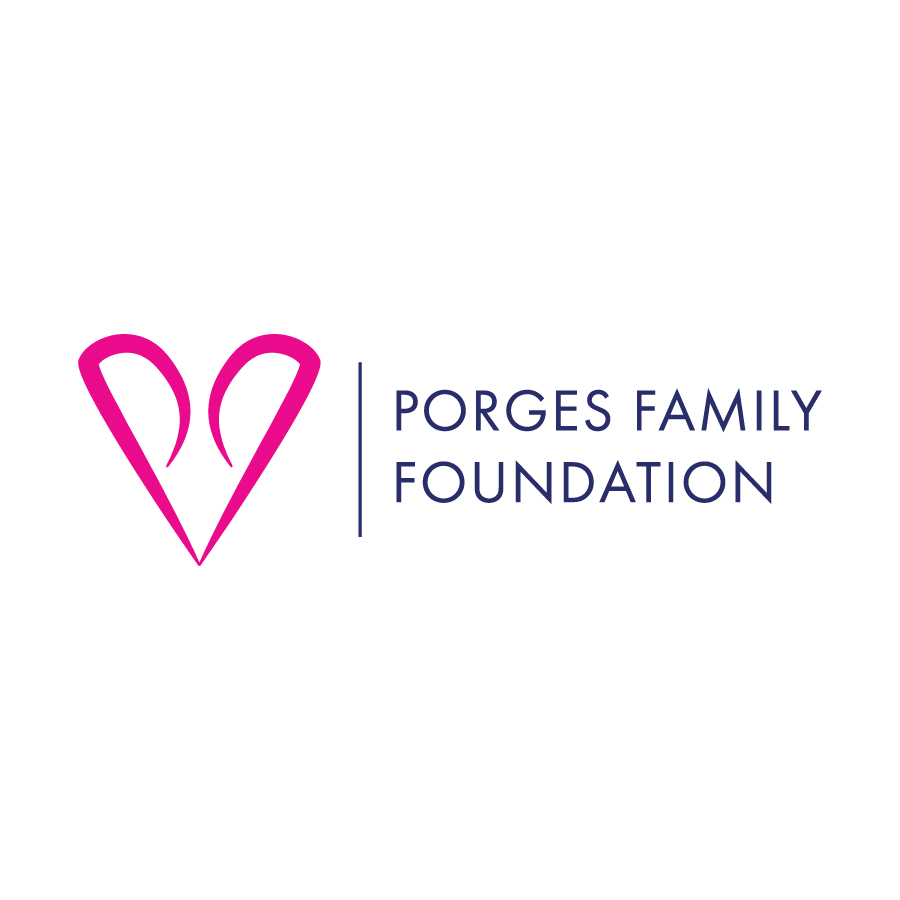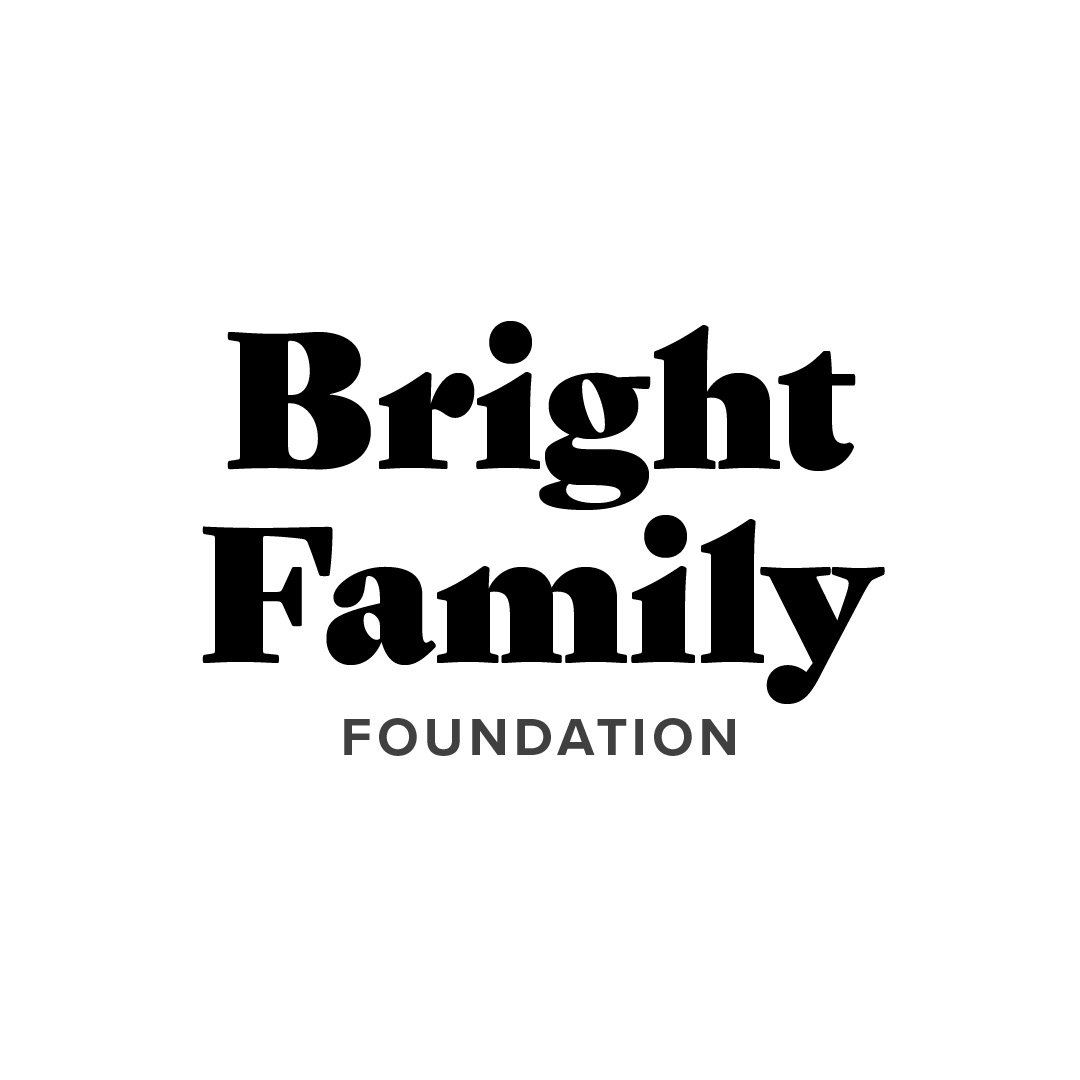Program Notes for April 11 & 12, 2025
Carnival of the Animals
George gershwin
Three Preludes (arr. Hersh)
Composer: born September 26, 1898, Brooklyn, NY; died July 11, 1937, Hollywood, CA
Work composed: 1926, originally for solo piano. Dedicated to Gershwin’s friend and colleague Bill Daly
World premiere: Gershwin performed the three preludes at the Roosevelt Hotel in New York City on December 4, 1926.
Instrumentation: flute, oboe, clarinet, bassoon, 4 horns, trumpet, trombone, timpano, bass drum chime, glockenspiel, snare drum, suspended cymbal, tam-tam, triangle, vibraphone, woodblock, xylophone, and strings
Estimated duration: 6 minutes
After the success of Rhapsody in Blue made George Gershwin a household name, the young composer set himself the daunting task of writing 24 preludes for solo piano. He began early in 1925, but quickly abandoned the project, probably for lack of time. Between January 1925 and the premiere of Gershwin’s three preludes in December 1926, the composer wrote no less than four Broadway shows, made two trips to Europe, and composed and performed his Concerto in F with the New York Philharmonic.
These three concise, highly atmospheric pieces have become favorites with both musicians and audiences since their premiere. Arrangements for small orchestra, solo instruments and piano, particularly for violin, clarinet, and other winds, have proved as popular as Gershwin’s original versions. The first prelude centers on a distinctive blue note theme set to a syncopated jazz rhythm. Gershwin described the second prelude as “a sort of blues lullaby;” its languid melody suggests both fatigue and melancholy. The third piece, which Gershwin referred to as “the Spanish prelude,” combines a striking offbeat rhythmic motif with jazz-flavored melodies.
Camille Saint-saËns
Canival of the Animals
Composer: born October 9, 1835, Paris; died December 16, 1921, Algiers
Work composed: February 1886
World premiere: March 3, 1886, in a private concert hosted by cellist Charles Lebouc in Paris.
Instrumentation: 2 solo pianos, flute (doubling piccolo), clarinet, glass harmonica (or glockenspiel), xylophone, and strings
Estimated duration: 22 minutes
Camille Saint-Saëns occupies a pivotal place in the history of French music. His numerous compositions include works in every genre, and, stylistically, his music bridges the gap between Berlioz and Debussy. (Before Saint-Saëns, 19th-century French music was virtually synonymous with opera; Berlioz’ Symphonie fantastique is a notable, but isolated, exception.)
Through his many instrumental works, Saint-Saëns expanded the boundaries of French music to include a broad array of orchestral and chamber works, thus raising the profile of French music internationally.
Saint-Saëns wanted his music to outlive him, and to be remembered as a significant composer. Ironically, he is best known today for his Carnival of the Animals, a satirical “witty fantasy burlesque,” in the words of a colleague, and one he refused to have published during his lifetime, fearing it would tarnish his reputation as a writer of “serious” music. (Interestingly, Saint-Saëns also stipulated in his will that Carnival be published after his death; Durand brought out the first edition in 1922). Originally written for two pianos and chamber ensemble, Carnival of the Animals has delighted children and adults for more than a century. Excerpts from Carnival have also entered popular culture through classic cartoons, films, and television commercials.
In 1885, Saint-Saëns embarked on an extensive concert tour of Germany, but his well-publicized negative opinions on the music of Richard Wagner enraged German audiences, and many of Saint-Saëns scheduled concerts were abruptly cancelled. In January 1886, Saint-Saëns took himself off to an out-of-the-way Austrian village to rest and recover. While there, Saint-Saëns amused himself by writing a humorous, satirical suite, each movement depicting a different animal.
Musical jokes and well-known quotations from other works appear throughout Carnival, which opens with a glittering tremolo of an Introduction that gives way to the magisterial Royal March of the Lion, music befitting the all-powerful King of the Jungle. Saint-Saëns effectively captures the hither-and-thither bustle of Hens and Roosters darting about, pecking at seeds on the ground while the clarinet squawks the rooster’s crow. Both pianists execute a headlong gallop up and down the keyboard as Wild Donkeys race past. Saint-Saëns pokes fun at the Tortoises’ sluggish pace with a slowed-down-to-a-crawl version of the famous high-stepping theme of the French Can-Can. The Elephant waltzes to a gently lumbering tune in the double basses, accompanied by delicate flourishes from the pianos. The pianos jumping chords depict Kangaroos hopping here and there, pausing now and then to look around. In The Aquarium, lissome fishes swim through sun-dappled water, while the strings’ flowing melody hints at mysterious underwater realms, accented by sharp pings of the glockenspiel and the pianos’ sinuous accompaniment.
The bray of Donkeys is featured in the brief Characters With Long Ears. Next, the pianos establish a quiet forest scene for The Cuckoo, whose characteristic call is sounded by the clarinet. Flocks of colorful tuneful birds surround us in The Aviary, as the flute’s nimble fluttering evokes their breathless flights. In the original score, Saint-Saëns tells the Pianists to “imitate the hesitant style and awkwardness of a beginner,” as they play a series of tedious scales and other practice exercises. In Fossils, the only non-living animals in the Carnival, Saint-Saëns borrows from his own Danse macabre to portray Fossils dancing to the metallic staccato sound of the xylophone. Quotes from other well-known tunes including “Twinkle, Twinkle, Little Star,” the French children’s song “Au clair de la lune,” and a quick nod to an aria from Rossini’s Barber of Seville are also featured.
The Swan is the only movement from Carnival that Saint-Saëns allowed to be published during his lifetime, in an arrangement for piano and cello. The piano’s graceful, understated arpeggios support the cello’s fluid unbroken melody as the swan glides with seeming effortlessness over the waters of a still pond.
In the joyful Finale, Saint-Saëns reprises snippets from previous movements, as the animals celebrate. True to form, the Donkeys have the last word, hee-hawing the Carnival to a close.
When Carnival was published and publicly performed after Saint-Saëns death, it was hailed by all as an unqualified delight. The newspaper Le Figaro’s review was typical: “We cannot describe the cries of admiring joy let loose by an enthusiastic public. In the immense oeuvre of Camille Saint-Saëns, The Carnival of the Animals is certainly one of his magnificent masterpieces. From the first note to the last it is an uninterrupted outpouring of a spirit of the highest and noblest comedy. In every bar, at every point, there are unexpected and irresistible finds. Themes, whimsical ideas, instrumentation compete with buffoonery, grace and science …”
Andrew Norman
Drip, Blip, Sparkle, Spin, Glint, Glide, Glow, Float, Flop, Chop, Pop, Shatter, Splash
Composer: born October 31, 1979, Grand Rapids, MI
Work composed: Commissioned by the Minnesota Orchestra for their Young People’s Concert Series in 2005.
World premiere: Bill Schrickel led the Minnesota Orchestra in the premiere on November 2, 2005, in Orchestra Hall, Minneapolis, MN.
Instrumentation: piccolo, 2 flutes, 2 oboes, 3 clarinets, 2 bassoons, 4 horns, 3 trumpets, 3 trombones, tuba, timpani, brake drum, crotales, ratchet, snare drum, slapstick, tambourine, tam-tam, triangle, vibraphone, woodblock, xylophone, piano and strings
Estimated duration: 4 minutes
Andrew Norman is a composer, educator, and advocate for the music of others. Praised as “the leading American composer of his generation” by the Los Angeles Times, and “one of the most gifted and respected composers of his generation” by the New York Times, Norman has established himself as a significant voice in American classical music.
Norman’s music often takes inspiration from architectural structures and visual cues. His music draws on an eclectic mix of instrumental sounds and notational practices, and it has been cited in the New York Times for its “daring juxtapositions and dazzling colors,” and in the Los Angeles Times for its “Chaplinesque” wit.
Drip, Blip, Sparkle, Spin, Glint, Glide, Glow, Float, Flop, Chop, Pop, Shatter, Splash was conceived as a “get-to-know-you” piece to introduce young listeners to the multifaceted sounds of the orchestra. “The process of writing it was a bit like making a tossed salad,” says Norman. “I chopped up sounds from the orchestra – one sound for each of the thirteen verbs in the title – and then I tossed them all together and called it a piece.”
The four-minute work whizzes by with the hyperkinetic energy of a Tom & Jerry cartoon. Each word of the title is delightfully and recognizably embodied by myriad, disparate sounds, from a battery of percussion instruments to muted brasses to bows playing col legno (on the wood) and a single woodblock ticking with anticipatory hold-your-breath excitement. Audience members should note that the verbs of the title are not necessarily depicted in order, but are encouraged to identify each one nonetheless.
aaron copland
Four Dance Episodes from Rodeo
Composer: born November 14, 1900, Brooklyn, NY; died December 2, 1990, North Tarrytown, NY
Work composed: The ballet Rodeo, from which this suite of dances is adapted, was commissioned in 1942, by the Ballet Russe de Monte Carlo, with choreography by Agnes de Mille. Shortly after its premiere in October 1942, Copland arranged the Four Dance Episodes for orchestra.
World premiere: Alexander Smallens led the New York Philharmonic at the Stadium Concerts in July 1943
Instrumentation: 3 flutes (2 doubling piccolo), 2 oboes, English horn, 2 clarinets, bass clarinet, 2 bassoons, 4 horns, 3 trumpets, 3 trombones, tuba, timpani, bass drum, cymbals, orchestra bells, slapstick, snare drum, triangle, wood block, xylophone, harp, piano, celesta, and strings.
Estimated duration: 18 minutes
When choreographer Agnes de Mille approached Aaron Copland about collaborating on a new “cowboy ballet,” Copland was less than enthusiastic. Copland’s 1938 ballet about the outlaw Billy the Kid had already given the composer the opportunity to explore Western musical themes in his work, and he saw de Mille’s project as more of the same. But de Mille, then a young and largely unknown choreographer, convinced the skeptical Copland her ballet was sufficiently different from Billy the Kid – a basic, universally appealing story set against the epic sweep of the American West – and Copland eventually agreed.
De Mille’s scenario featured a tomboyish Cowgirl from Burnt Ranch who shows up the ranch hands by out-lassoing them while roping bucking broncos. She is drawn to the Head Wrangler, who takes little notice of her, despite her obvious skills as a cowboy, until she puts on a pretty dress and makes eyes at him at the Saturday night barn dance.
As he did in Billy the Kid, Copland makes use of several authentic cowboy songs. After a high-energy brass introduction, Buckaroo Holiday features the song “If He Be a Buckaroo by His Trade,” (trombone solo approximately halfway through the movement). In the gentle Corral Nocturne, Copland quotes the song “Sis Joe” (about a train named Sis Joe heading for California’s Gold Rush country). By slowing down the song’s usual tempo, Copland creates an intimate, wistful interlude that captures the Cowgirl’s loneliness. The relaxed, low-key Saturday Night Waltz features a famous cowboy song, “I Ride An Old Paint. Hoe Down is the most recognized movement from Rodeo, thanks to its use in a popular commercial advertising American beef. In the final scene of the ballet, at a boisterous hoe-down, the cowgirl appears in a party dress, and the cowboys finally notice her. After a rhythmic introduction, “Bonaparte’s Retreat,” “McLeod’s Reel,” and other square dances fill the air with foot-stomping, thigh-slapping tunes.
© Elizabeth Schwartz
NOTE: These program notes are published here by the Modesto Symphony Orchestra for its patrons and other interested readers. Any other use is forbidden without specific permission from the author, who may be contacted at www.classicalmusicprogramnotes.com




















